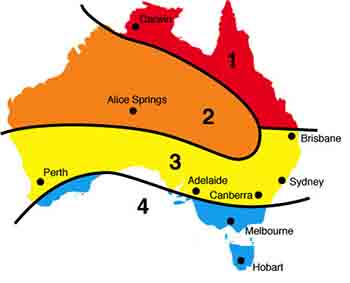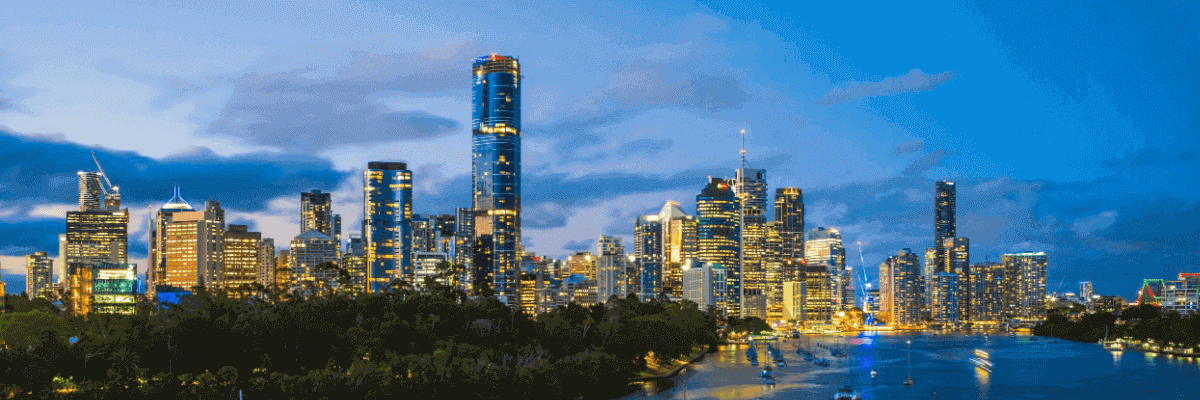KEY POINTS
- Queenslanders typically pay between $3,900 – $8,700 for solar systems based on their preferred size.
- Queensland solar schemes include feed-in tariffs and Small-scale Technology Certificates (STCs).
- Solar energy savings can pay back the installation costs of solar systems years later, but there are other factors to consider before committing.
On this page:
Advertisement
How much does solar cost in Queensland?
It generally costs between $3,900 and $8,700 to purchase and install a new solar PV system in Queensland. Small solar systems (less than 3kW) generally cost $4,000 or less, while 4kW systems or larger will set you back upwards of $4,400.
While that might sound expensive, solar is considerably cheaper in Queensland than in most other states and territories. The below table courtesy of Solar Choice shows the average price for popular solar system sizes in Queensland, compared to the national average. As you can see, a solar system in Queensland is often several hundreds of dollars cheaper than across the border.
← Mobile/tablet users, scroll sideways to view full table →
| 3kW | 4kW | 5kW | 6kW | 7kW | 10kW | |
|---|---|---|---|---|---|---|
| Queensland | $3,800 | $4,380 | $4,760 | $5,140 | $6,240 | $8,400 |
| National average | $4,060 | $4,710 | $5,240 | $5,960 | $6,880 | $9,250 |
Source: Solar Choice – October 2024 solar price index. Prices are after applied STC discounts and GST.
These prices reflect estimated costs within Brisbane, QLD. The actual cost of your solar panels can vary greatly depending on where you are, what system you’re after and your installer. For a specific quote, you should get in touch with your preferred installation specialist.
SEQ solar plans
Here are some of the cheapest solar-specific deals from the retailers on our database. These products are from referral partners†. These costs are based on the Energex network in Brisbane but prices will vary depending on your circumstances. We show one product per retailer, listed in order of lowest price first. Annual price estimates assume general energy usage of 4600kWh/year for a residential customer on a single rate tariff. Price estimates exclude solar feed-in tariff credits. This table includes products from referral partners†. Our database may not cover all deals in your area, and please check retailer websites for up to date information.
How many households have solar in Queensland?
According to the clean energy regulator, almost a million (962,917) or 1 in 5 Queensland homes and businesses have a solar system installed, making it the largest solar generating state in Australia.
While solar uptake in Queensland has slowed down since the Solar Bonus Scheme closed in 2012, many households are still getting on board – particularly in the south-east of the state, with several Brisbane suburbs already having a solar penetration of more than 50%.
QLD solar rebates and incentives
There are two primary solar incentives available: Feed-in tariffs and Small-scale Technology Certificates (STCs). These schemes help reduce the cost of solar and make it easier to get a return on your investment.
Small-scale Technology Certificates in Queensland

STCs are part of the federal scheme which rewards customers with a form of rebate. If you install solar panels or a solar hot water system, you will receive a number of certificates that can be sold on an open market or given to your solar installer for a hefty discount on your system.
The price per certificate shifts with supply and demand, though it usually sits around the $40 mark. The number of STCs you will receive will depend on the systems size, as well as your location. The country is split into STC zones 1 through 4, with zone 1 having the highest STC reward. As the image shows, solar power customers north of the Sunshine Coast receive the most STCs. Inland Queenslanders will earn the second most and south-east Queenslanders, the least.
Queensland Government solar feed-in tariffs
When solar panels produce electricity and no one uses it, this power is transferred to the shared energy grid. For every kWh of electricity that your solar panels export, your energy distributor will rebate a few cents off your electricity bill.
The minimum flat-rate feed-in tariff in regional Queensland is 8.66c/kWh, while South East Queenslanders (on the Energex network in the Brisbane area) receive a voluntary FiT that’s usually around 4-6c/kWh. Some retailers may offer higher FiTs, however.
Customers who signed up to the Queensland government’s old Solar Bonus Scheme before July 2012 will continue to receive an additional flat-rate FiT of 44c/kWh until 2028. Unfortunately for new solar customers, however, reintroducing a premium feed-in tariff doesn’t look like it’s on the cards.
QLD solar companies and feed-in tariffs
Electricity customers in south-east Queensland (from the NSW border to around Gympie and Toowoomba) are able to choose their energy provider. Feed-in tariffs for SEQ customers vary from 1c/kWh to 20c/kWh, so it’s worth shopping around. When comparing electricity products, keep in mind some solar deals often have higher rates and smaller discounts than standard (non-solar) offers. That means a solar plan with a high FiT won’t necessarily be the cheapest option. Some FiTs may only be available to customers who meet specific criteria, like purchasing a solar system through their provider.
Solar battery systems in Queensland
Queensland has an abundance of sunshine, which means your panels will often produce more electricity than what you can use. When this happens, excess power generated by your panels goes to the shared electricity grid. In exchange, customers receive a ‘feed-in tariff’ – a small rebate of a few cents per kWh of electricity exported. Alternatively, customers with a solar storage system can store excess solar power to use for themselves later on. Since electricity usage rates are generally much higher than solar feed-in tariffs, customers will save more by storing and using the solar power themselves, rather than exporting it.
The downside to solar storage systems is that they don’t come cheap. A standard retrofit battery can cost between $8,000 and $12,000, though price varies depending on capacity, brand and installation difficulty. It will typically take 10 to 15 years for a solar battery to pay for itself. However, most batteries are only covered by a 10 year warranty, so it’s possible you won’t recoup your investment.
Given that a battery system is a considerable investment, there’s a few things you should consider before committing funds:
How large is your solar system?
The larger the solar system, the more excess power and the more likely you’ll benefit from a solar storage system
What feed-in tariffs are available?
If you can secure a large feed-in tariff, then installing a battery might not make sense
What electricity tariff are you on?
If you’re on a time-of-use tariff, a battery system can help you save by kicking in during peak times when electricity is most expensive
Keep in mind that not all batteries are compatible with different solar systems and inverters. Make sure to contact your installer and get their opinion on the right battery for your home.
Is it worth getting solar in QLD?
Solar is not the sure-fire investment it was in the days of the Solar Bonus Scheme. However, it can still save money in the long-term by shaving hundreds off your energy bill every year.
While the price of solar has fallen over the years, solar panels are still an expensive purchase. It will take years before the solar panels pay off and your solar savings exceed what you spent on the system.
Solar is most profitable for households and small businesses which:
- Have great weather
- Are charged high electricity usage rates
- Receive a large feed-in tariff
- Live in STC zone 1 or 2
Original reporting by Kelseigh Wrigley
Image Source: Richie Chan/Shutterstock
FAQs about solar in QLD
Solar can be installed on nearly any type of roof, whether it is flat or tilted. Solar installation costs may, however, be slightly more expensive if your roof is flat as the installer would need to install and mount the solar panels on angled brackets.
Anyone with an old or damaged roof should consider repairs before installing solar – once fitted, your roof needs to last as long as the new solar panels.
Keep in mind, if there are trees blocking sunlight to your roof, you may need to have branches trimmed to ensure sunlight reaches the solar panels.
The more you pay for electricity, the more you can save with solar – it’s that simple. Alternatively, if you’re not getting a good price on electricity, compare electricity providers in Qld.
The solar system size you need will entirely depend on your energy consumption. For example, a 3kW system will produce around 12kWh of electricity. The average household will use around 16 to 20 kWh of electricity per day – however only a fraction of this is used through the middle of the day when solar is at maximum output. With solar panels generally lasting at least a decade, it’s also important to plan ahead. If you have kids moving out of home soon or more on the way, it might be worth looking into a smaller or larger unit than originally quoted.
While solar panels undoubtedly improve property value, how much value they add will depend on the property market – so it’s not necessarily a safe bet. If you’re planning on leasing out the property, realestate.com.au says renters are likely to pay more rent for a property with solar panels.
In QLD, you generally only require council approval to install solar units that are over 5kW. If you live in a rental or apartment building it is probably still good idea to check with your body corporate or landlord too before installing solar.
Origin Energy generally has one of the highest solar feed-in tariffs (FiTs) available to customers in QLD. Not only does Origin have reasonably high feed-in tariffs, it also offers solar-specific deals tailored to households with solar panels. As always, some terms and conditions apply in order to receive a higher FiT rate.
Read our guide on QLD feed-in tariffs for more details.
Unfortunately not, solar systems require installation from accredited and licensed solar installers. In Australia there are a number of legislations and licenses put in place by the Government that enforce solar installer accreditation under the Clean Energy Council (CEC). Solar installers themselves are required to be accredited, not the company in which they work under, so be sure to always read the fine print before signing up for your installation.




Share this article